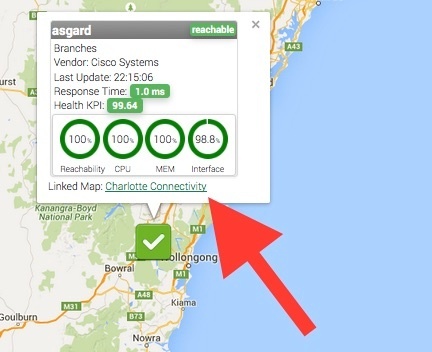...
The Add Node button allows you to add an individual Node to the Map. The Display Name and Icon fields have no effect in a Geographical Map.
If set, the Link to Map option will open a new Dashboard rather than opening the Node detail window when the icon is clicked. This is especially powerful - allowing you to drill down from a top-level abstract diagram to more in-depth levels of detail.
Once the node is added it may be moved around the Map by left-clicking and dragging it to position.
...
The path the link lin follows can be edited by dragging the white dot marker on the line. Each time you drag a marker the line will be subsections into 2 additional sections with an additional marker being added. This allows you to create links that very accurately follow the path of roads or utility lines.
Add Placeholder
Geological maps Geographical maps do not support Placeholders
Editing Nodes in the
...
Geographical Map
Nodes on the Geological Geographical Map can be moved and the map re-centered (as well as zoomed in/out) but the nodes cannot be edited or deleted. .
Locating and Centering the Map
When a Geographical map is first created it centers on its default location, Brisbane, Australia. You can resize the view (zoom in/out) using your mouse's scroll wheel (if equipped) or the zoom controls located on the left side of the map window. You can relocate the center of the map by left-clicking and dragging the map surface or by using the arrow control in the top-left corner of the map.
When you save your Geographical Map opCharts will store the center location of the map and zoom state. However, when used in a Dashboard, the final display size will be driven by the size of the Component window the Map is contained within. Some testing and adjustment may be necessary.
